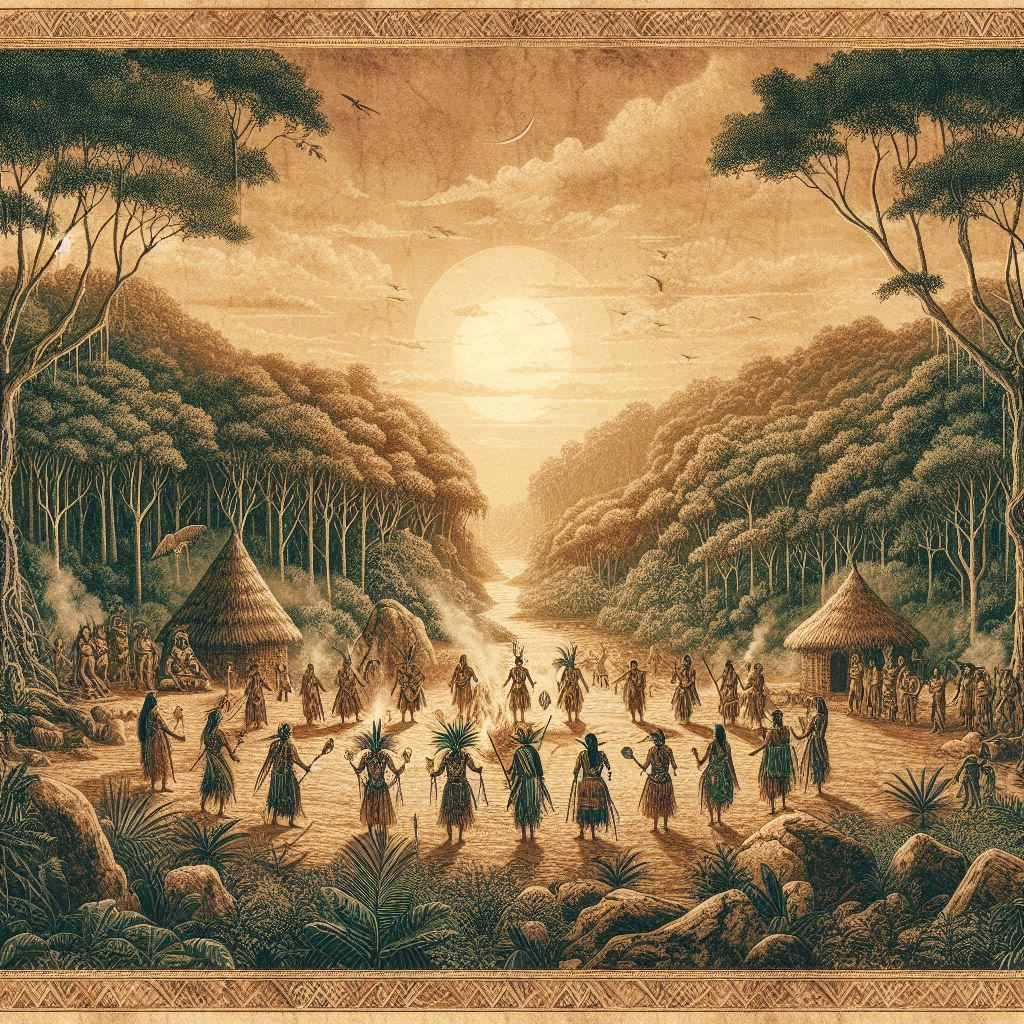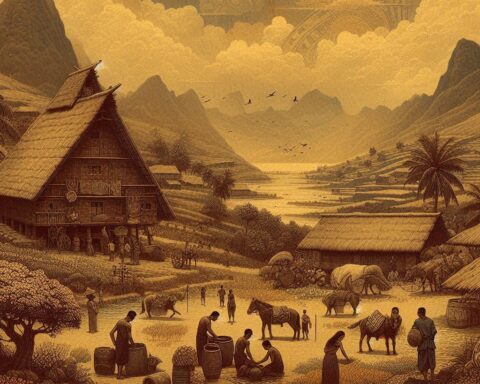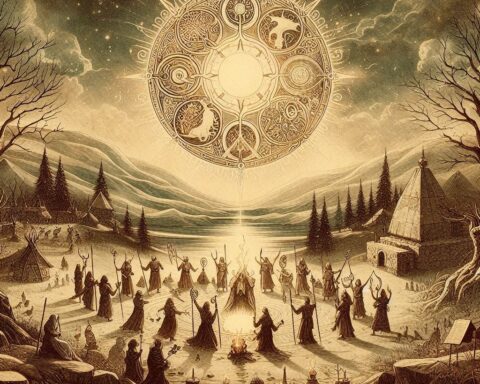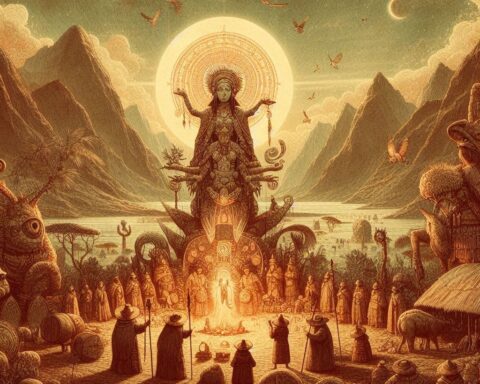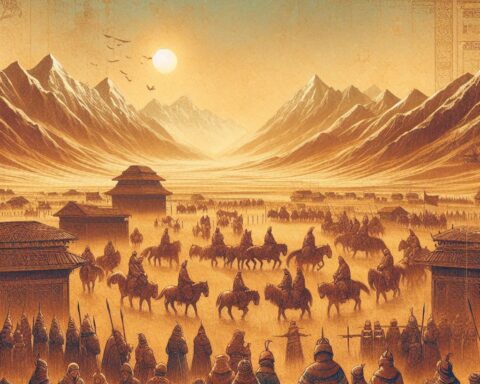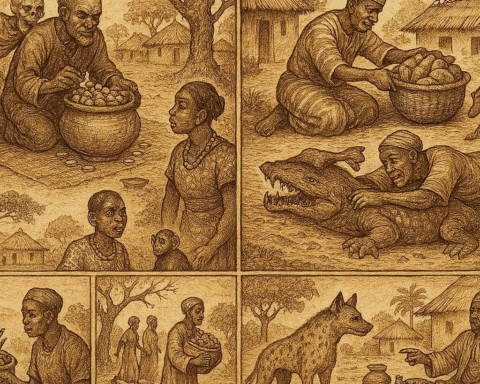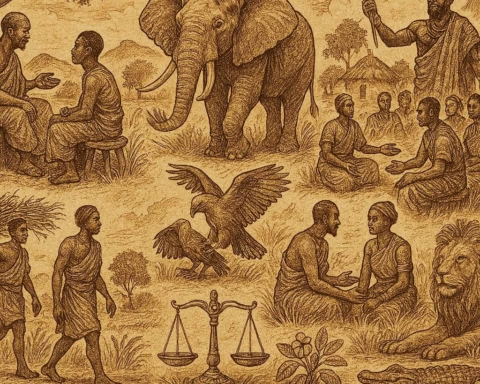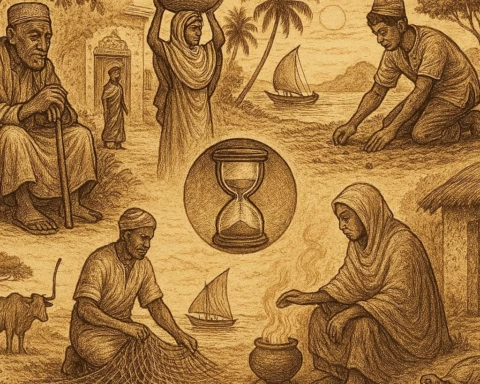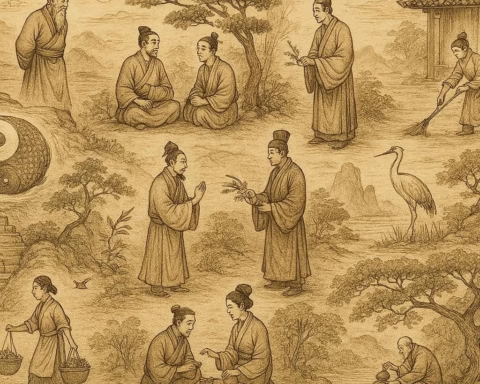Long before the rivers had names, before birds learned their songs, the Great Forest stretched without end. It was alive, not as trees and vines alone, but as a single breathing spirit called Yara-Mãe, the Mother of Green.
The people of the forest lived under her shade, taking only what they needed. But Yara-Mãe feared that, one day, greed would hollow her heart. So she called her first son, a boy with eyes like moonlight and hair like black vines. She named him Amaru, the First Shaman, and taught him seven rituals to bind people to the forest forever.
Amaru learned them by firelight, and before he died, he passed them to his apprentices. These are their stories.
1. The First-Breath Ceremony
In the beginning, the forest and the people spoke the same tongue. But when men forgot, they began trampling paths without asking. The First-Breath Ceremony restored the greeting between human and tree.
A shaman would stand at the edge of an untouched grove, blow his breath toward the canopy, and whisper the names of the rivers and trees nearby. He offered crushed tobacco to the roots and poured sweet beer into the soil. Only then could the hunters step forward.
2. The Vine-Song
One season, a terrible sickness spread, and no herb could cure it. In a dream, the Spirit of the Vine came to Amaru and sang. Each note revealed the shape, scent, and power of the healing plants.
From then on, shamans sang while gathering and preparing medicines. Each plant had its own song, a melody only the forest and the healer understood.
3. The River Oath
When the rivers ran silver with fish, people grew careless, taking more than they could eat. Angered, the River Spirit withdrew its bounty, and famine came.
Amaru walked the riverbank, sprinkling water upstream, releasing a white feather downstream, and swearing never to poison or waste. The fish returned. Every year after, the people renewed this vow together.
4. The Naming of the Tree
There was once a boy who cut a giant cedar without asking. That night, the Tree Spirit came for him, whispering in a voice like splintering wood.
To prevent such curses, the shamans began the Naming of the Tree. Before cutting, they named the tree aloud, tied a ribbon to its trunk, and made a promise, only certain branches, in certain seasons. This turned the tree from “resource” into “kin.”
5. The Smoke-Calling
A pestilence once devoured every crop in the village. Amaru gathered sacred leaves and resins, set them alight, and walked the fields with smoke spirals curling above him. His chants confused the evil spirits, and the blight fled.
Now, every planting season, the people join the shaman in Smoke-Calling, letting the smoke drift over their fields like an invisible shield.
6. The Feast of Return
In the first years, when harvest time came, people rushed to eat, forgetting to thank the land. Yara-Mãe grew silent, and the soil hardened.
One elder remembered Amaru’s teaching: the first fruits must be given back. So they prepared a leaf altar, set the best fruits and grains upon it, and sang to the earth. The rains returned that night.
7. The Dream-Weaving
As Amaru grew old, he feared the young would forget the hidden paths and sacred groves. So, under the full moon, he led them into dreams, some through plants, others through stories, where they could walk the forest in its oldest form.
In these dreams, mountains spoke, rivers glowed, and the young learned where to find food, medicine, and shelter. When they awoke, they carried those maps forever.
The Binding Promise
When Amaru died, the people feared the rituals would fade. But each shaman, before becoming a master, swore the Binding Promise: “As the vine twines the tree, so my spirit shall twine with the forest. I will teach the Seven, and I will keep them whole.”
Even now, deep in the Amazon, if you listen at night, you may hear the Vine-Song over a cooking fire or see a ribbon fluttering from an old cedar. The forest still breathes, because the people still remember.
Knowledge Check
1. What is the First-Breath Ceremony?
It’s a ritual where shamans ask permission from the forest before entering untouched land, offering gifts and greetings to the spirits.
2. How does the Vine-Song help heal?
It’s a shamanic chant taught by plant spirits, guiding the healer on which plants to use and how to prepare them.
3. Why is the River Oath important?
It’s a yearly vow to protect waterways from pollution and overfishing, ensuring abundance for future generations.
4. What is the purpose of Naming the Tree?
To create kinship with the tree’s spirit, ensuring respectful and sustainable use of its resources.
5. When is the Feast of Return performed?
At the start of harvest, to offer the first fruits back to the earth in gratitude before the community eats.
6. What does Dream-Weaving pass down?
It preserves environmental knowledge and sacred geography through visions and storytelling for younger generations.
